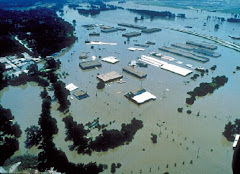Though due to the global warming impact there has been many seasonal changes, but the months of Nov Jan are considered to be the colder months of the world especially in the northern hemisphere.
Global warming is an issue that requires immediate action.
With global warming, the Netherlands would be in danger with the polar ice melting and the sea level coming up to an threatening level. First it was the hole in the ozone layer, then global warming, then El Nio, then Seinfeld called it quits -- my God, is there no end to the horror we mortals must endure.
But what with global warming, and rising sea levels, we figure that we might be able to just go to Southern VT or NH year-round, or back to RI where we grew up. The fact is that global warming is in the future and most individuals are more worried about what is happening in the present.
The global warming alarmists want us to believe all of their research and paperwork and they tell us to the earth is heating up and we are all going to die in an apocalyptic fiery hell.
Warming world
Whatever global warming and peak oil do to world markets, one thing is certain: individuals will still have to eat. By stopping the consumption of meat and dairy products, we would raise the level of average health in the population a lot, we could cut down on the health budgets of each nation (which are very high all over the western world,- a real burden on us all), and at the same time save ourselves from the green house effect and the global warming problem.
And the price of burning fossil fuels is more than just financial: environmentalists the world over continually warn about the dangers of using non-renewable energy sources that pollute the environment when burned, global warming being just one of the major topics frequently discussed.
Consequences of global warming
The idea is to stop, or at least slow down, the effects of global warming. Instead of just talking about the scientific results of climate change on our biosphere, talk about the South Pacific fisherman who can no longer feed his family because the fish catch has declined due to global warming. An Inconvenient Truth - if you have to see one, see this one about global warming and its terrible far-reaching effects.
Take for example, the global warming and earth changes are direct effects of this lack of care.
These and a mass of other global warming questions are rising up across the world. Proponents of the bill have a whole different set of assumptions: --they arent at all certain that humans have a decisive part in global warming.
Facing the facts of global warming, countries all over the world have just begun to acknowledge the negative effects of global warming not only to the world's politics and economy but also to humankind in general.
Article Directory: http://www.articledashboard.com












